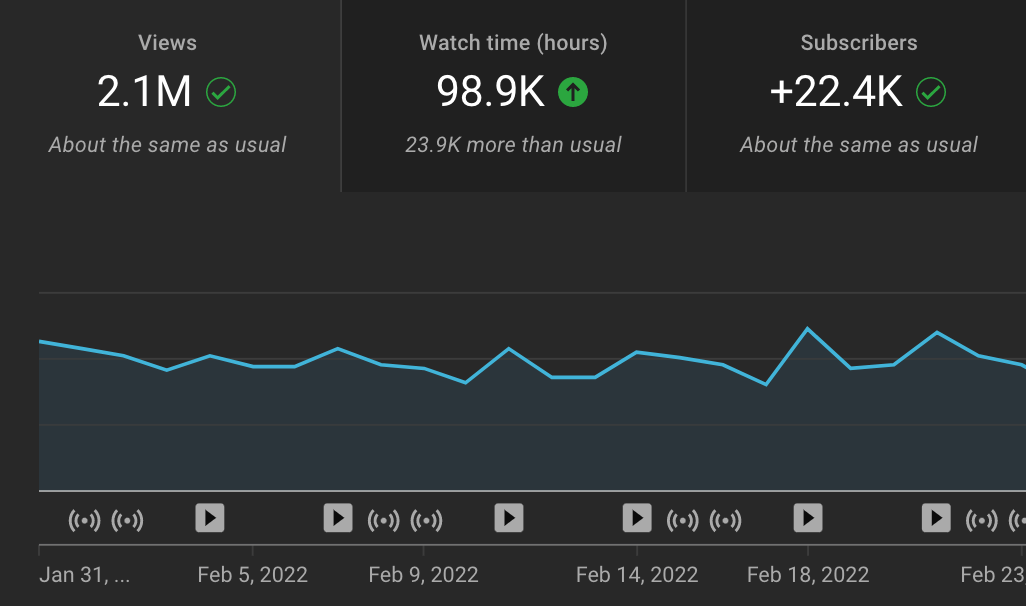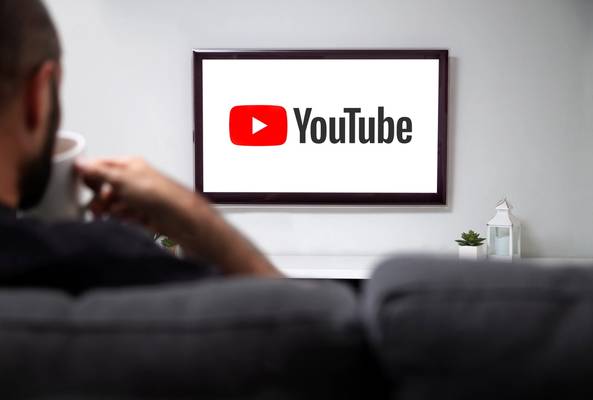Lydia Sweatt is a writer who loves balancing her article/blog time indoors with a healthy dose of nature. She bikes, hikes, and identifies edible plants along the way.
13 Skills You Need to Become a Successful YouTuber
Many people want to become a successful YouTuber, but it's harder than it looks. You need a variety of skills to create good content, such as scripting, storytelling, and video editing. And if you want people to click on your videos in the first place, you'll need even more skills — thumbnail creation and title writing, to name a few.
So, how do you master all of this?
First, learn the right YouTube skills. You don't need to know everything about content creation, but you should have a good mix of hard and soft skills. You should understand how to ideate video concepts while using digital software to bring those stories to life.
Ready to get started? Here are the top skills you need to be a YouTuber.
Technical Skills for YouTube Success
You don't often hear "technical" and "YouTuber" in the same sentence. Most people think of words like "influencer" or "trendsetter," but technology is involved no matter what you're doing on YouTube.
This section will share skills needed to master the technical side, from channel analytics to video editing.
1. Researching (for Keywords & Trending Topics)
If you're serious about growing, you'll do keyword research to understand what people type to find your videos. That could be any collection of words depending on your niche — "homemade cat food," "best chocolate chip cookies," "how to get dual citizenship," or something else. You can make videos matching those queries if you know what people are searching for on YouTube.
But all keywords aren't created equal. Some are highly searched on YouTube (which is fantastic) but difficult to rank for in YouTube search.
The phrase "Marvel movies" is a good example. If you use vidIQ's keyword inspector, you'll notice the term is searched over 100,000 times monthly. It's also one of the most competitive topics on YouTube and hard to get views for.

Read this guide to find the right keywords for your channel and get more views.
2. YouTube SEO (for Optimizing Videos)
SEO stands for search engine optimization. On YouTube, it's the process of placing relevant keywords in video titles and descriptions to help the algorithm understand what your video is about.
When the YouTube algorithm understands your video, it can display it on search pages or recommend it to more people, which leads to more views.
For example, we often use the keyphrase "small channels" on YouTube. Our viewers are primarily new creators, so that phrasing helps our videos stand out to the right audience.

3. Video Production
Producing a video can get pretty technical, even for down-to-Earth YouTube. Depending on the videos you make, you might have to learn any of these skills:
- Sound design (buying the right microphone, reducing wind noises outside, etc.)
- Set design (creating an appealing backdrop for your videos)
- Lighting (understanding how to light your space)
- Video quality (buying the right camera and accessories to get stellar footage)

Some creators go the easy route. They film in natural light (near a window) and stay indoors to avoid noise pollution. Some even turn their smartphones into portable mics.
We've also seen creators shooting on an iPhone, so your equipment truly depends on the content you're making.
4. Video Editing
When editing videos, you'll spend a lot of time deleting scenes that don't move the story forward. After that, you can do the fun stuff: adding special effects, music, text, transitions, and sound effects.
Video editing is pretty technical because it involves learning new software. You might edit using Adobe Premiere Pro, Final Cut Pro, or even iMovie. Some software is easier to understand than others, but you're still dabbling in technology!
5. Graphic Design (for Creating Thumbnails)
Before anyone watches a video, they look at the thumbnail to see how enticing it is.
They might read some text on the image that better explains the video. Or maybe they'll look at symbols reinforcing the main idea — puppies, a tennis racquet, a character from Minecraft, or anything relevant. These visual cues help people decide if they should click or not.
Fortunately, you don't have to be a graphic designer to make good YouTube thumbnails. You only need to know the basics of design, like using the right colors and incorporating negative space to simplify your images.
Here's an example from the vidIQ channel. We paired this thumbnail with a video about a new service becoming a potential YouTube competitor. But you probably knew that just by glancing at the image!

If you need more tips, here's how to make click-worthy thumbnails on YouTube.
6. Marketing (to Promote Your Channel)
YouTube does an excellent job recommending videos to viewers, but extra promotion always helps.
For example, you could start a Facebook page for your channel and share content there. You could chop longer YouTube videos into Instagram Reels and TikToks. If you really want to stand out, you can share helpful videos from your channel in online forums (as long as they solve problems for that community).
And if you need more convincing, know that YouTube wants you to share your videos off-platform. Learn more in this article about the YouTube algorithm, where YouTube's director of product management explains why extra promotion is good for small creators.
7. Channel Analytics
Growing a YouTube channel is much easier when you know what's working and what's not. The YouTube Studio has all the information you need, including the basics like views, watch time, and subscribers gained.

There's a lot to explore in the YouTube Studio, so we recommend learning these first:
- Click-through rate: The percentage of people who click your video after seeing the thumbnail.
- Audience retention: How much of your video people manage to watch.
- Traffic from YouTube suggestions: The traffic you get from YouTube recommending your videos to viewers.
- Subscribers gained: The number of subscribers you earn from each video.
- Engagement: The number of comments, likes, and shares on your videos.
- New vs. returning viewers: The amount of new and repeat viewers on your channel.
Read More: YouTube Channel Analytics - The 6 Most Important Video Metrics
Non-Technical Skills for YouTube Success
Of course, YouTubers do more than film, upload, and track their views. A lot happens in between, so you'll need soft skills to grow your audience too. That includes storytelling, collaboration, and the discipline to grow from zero.
Here's a closer look at the skills you need.
1. Networking (for Video Collabs)
Of all the things you can do on YouTube, networking with other creators is severely underrated. But don't let that stop you. Creators who collaborate get more views and subscribers as they work together to share similar audiences on YouTube.

Just imagine it. You make videos about a specific topic, and another person creates videos within the same niche. While they're posting makeup tutorials (for example), your content is about building a wardrobe and styling nice outfits. There's a good chance both of your subscribers are interested in beauty overall, from makeup to fashion.
So why not collaborate? If everything goes well, you'll gain new "fashion" viewers who are also interested in makeup. It's an instant win.
2. Creativity (for Unique Video Ideas)
Many see creativity as a rare stroke of genius or a brief moment of inspiration. But it's more common than that. The ability to be creative is a full-blown skill, and you can strengthen it daily by creating video ideas.
The good news is that every idea doesn't have to come from your brain. You'll find inspiration in several corners of the internet, including.
- TikTok
- Google Trends
- Community forums
- Facebook groups
- Discord
Read More: 6 Places to Find Trending Topics for YouTube Videos
Once you have the basis for an idea, put your creative spin on it. These seven tips will help you get started!
3. Communication and Storytelling
Communication is everything when you have a YouTube channel. At a basic level, you should learn how to speak clearly and confidently when recording videos.

It also helps to learn the basics of storytelling. Spend some time watching your favorite YouTubers or gain inspiration from channels in your niche. You'll learn so much just by observing how other people structure their videos from start to finish.
If that's not enough, this storytelling format always works:
- Video hook/intro
- Rising action
- Climax
- Falling action
- Cliffhanger (where you suggest another video from your channel)
4. Consistency and Work Ethic
Every YouTube channel starts at zero subscribers. So if no one's watching your videos, understand that people will watch them later.
All you have to focus on in the beginning is creating good content. As your audience grows, YouTube will start recommending those older videos to your loyal viewers.
So, for now, just crank up the work ethic. Tell your viewers how many videos you'll post each week and stick to that number. Nothing beats a dependable, entertaining YouTube channel!

5. Community Engagement
As you grow your channel, remember to bond with loyal viewers.
Here are a few ways to strengthen the creator-viewer relationship:
- Respond to viewers' YouTube comments.
- Post engaging polls on the YouTube Community tab.
- Do small giveaways on your channel.
- Start a Channel Membership for loyal fans.
The best way to build a community is by being genuine, authentic, and transparent. So always be yourself and let viewers see the real you.
6. Enormous Self-Belief
It's easy to get discouraged as a new YouTuber, especially when learning to create videos and get subscribers. There will be times when you feel like giving up and quitting, but just remember that everyone has to start somewhere. Even the biggest creators like MrBeast had to work really hard to get millions of subscribers and views.
That's why we saved the best YouTube skill for last: having enormous self-belief. Because if you don't believe in yourself, it doesn't matter how well you can film, edit, or tell a story. No one gets to see that if you give up.
YouTubers Have a Wide Skill Set
To sum it all up, you need several skills to create fascinating YouTube videos.
Hard YouTube skills:
- Researching
- YouTube SEO
- Video production
- Video editing
- Graphic design
- Marketing and promotion
- Channel analytics
Soft YouTube skills:
- Networking and collaborating
- Creativity
- Communication and storytelling
- Consistency and work ethic
- Community engagement
- Enormous self-belief
While there is no "perfect" path, all of these skills lead to YouTube success.
Ready to take the leap? Here's how to officially start your YouTube channel!



